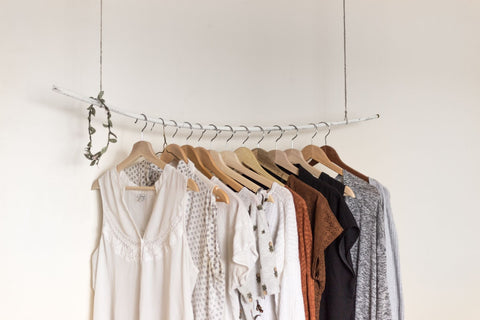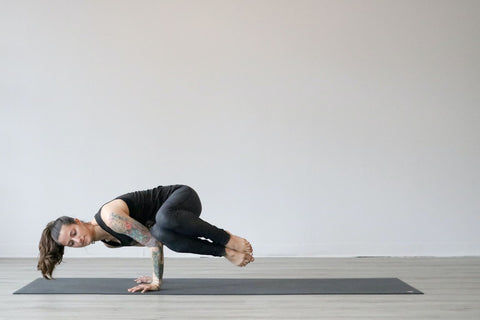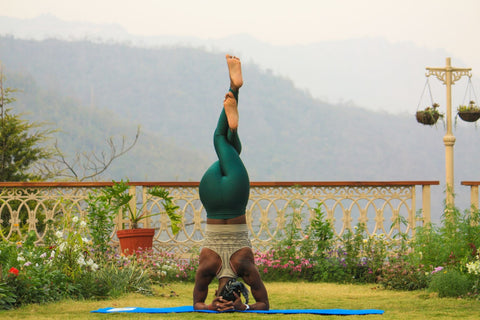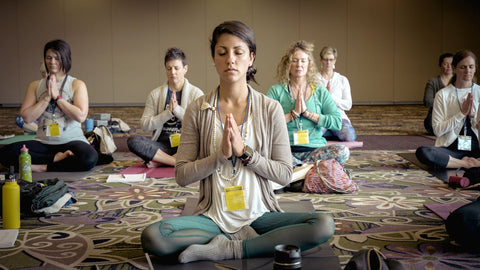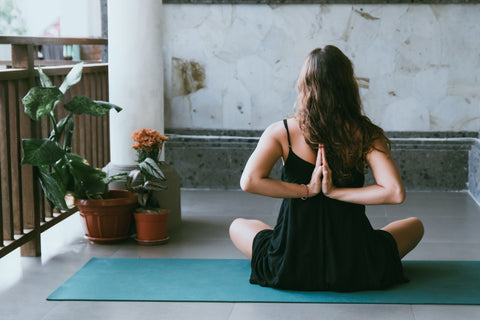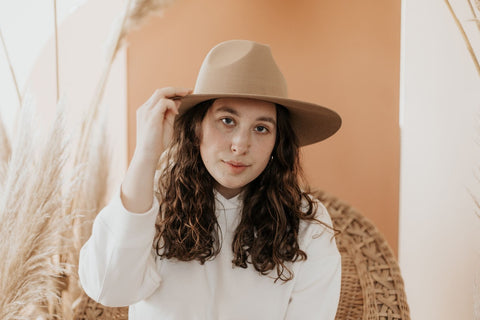Most of us who asana in the heat still come to class with some skepticism. Of course, doing yoga in a room heated to 104 degrees is a practice that is acquired over a period of time! If you’re thinking about attending your first hot yoga class, don’t be nervous of the challenge. With a little forethought and preparation, you can ease in and make your first hot yoga class a gentler experience.
What to wear and bring:

Your regular yoga mat may not offer as much stick when it’s wet, so it is beneficial to bring a mat towel. In a pinch, a hand towel can be used under your hands, with a backup to mop your eyes and face. Making sure that your hands and feet don’t slip is a both a safety and mindfulness issue; it’s hard to be in the moment if you’re worried about falling.
It’s also important to be comfortable when choosing the appropriate yoga attire for your first hot yoga class. If you’re used to practicing in loose clothing, you’ll want to venture into new territory. It doesn’t hurt to introduce yourself to hot yoga clothing brands that will support you during the heat because you will sweat. A lot. Loose yoga clothes can get heavy and uncomfortable, which can ironically restrict your movement. If shorts and a sports bra aren’t your style, try a form fitting tank and leggings. Whatever you wear, make sure that the material is made to wick sweat. Most hot yoga leggings are made of a nylon/spandex blend to help keep moisture moving away from your skin and dry quickly.
A few hours before class:

Make sure you are well hydrated. No matter how much you love the heat, you will sweat. Making sure that your body has adequate reserves can help both your performance and recovery go smoother. Bringing a full water bottle with you will also help you avoid dehydration.
Eat something no sooner than an hour before class. Just make sure it isn’t hard to digest or a full meal. Treat this aspect of preparation like you would for any other strenuous physical activity. Lighter but nutrient dense foods will fuel your practice without slowing you down or making you queasy. This is not the time to finally try the spicy sweet potato fries at your favorite restaurant!
While in class:

Remind yourself that there is no room on your mat for ego. As in any other yoga practice, hot yoga has nothing to do with competition and everything to do with allowing your body to experience the asana without judgment or force. No one is judging your practice (and if they are, remember that other people’s opinion of you is none of your business...or concern). Your first hot yoga class is a time to step back and observe. Be careful not to overstretch, which can cause some of the most common yoga injuries. Take child’s pose or even a mini savasana as often as you need. It can also be helpful to drink a few ounces of water when you take a break.
One of the benefits of hot yoga is that a higher temperature makes muscle and fascia more mobile. Studies have shown that 104 degrees F creates an environment that promotes more elasticity in both muscle and fascia fibers. This can feel amazing, but is also an opportunity to practice restraint. Rather than trying to push further into a pose, notice what happens if you create boundaries. Remember that yoga is about flexibility within strength.
After class:

Remember to keep hydrating. Your body has likely lost a significant amount of water during your hot yoga class. When dehydrated, blood flow to exercising muscles is significantly reduced (and, remember that your heart is a muscle!) Support yourself and your practice by continuing to hydrate throughout your day.
While it’s common to feel calm and centered after your first hot yoga class, you can also feel exhausted, irritable and cranky. While a heated practice is not for everyone, it’s important not to discount hot yoga after the first try. Some pediatricians recommend offering babies new foods eight separate times, as their palates often need to be developed. So, take baby steps. Maybe try a hot yoga class twice a week for a month before you decide it’s not for you.
And if it isn’t, please practice whatever type of yoga speaks to you. Thankfully, there are enough styles of yoga to support us all.
About the Author

Wendy Webb is a homeschooling mama and a lover of arm balances, coffee, and mountains. She’s been teaching heated, alignment flow, chair yoga and mindful movement in the woods of Maine since 2005.

